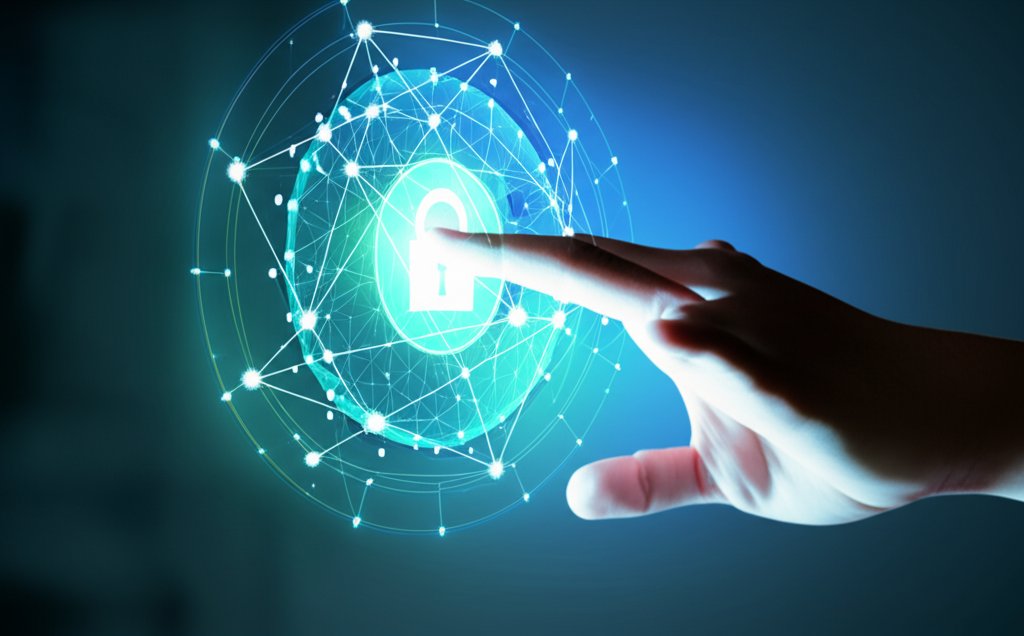In our increasingly interconnected world, you are constantly sharing fragments of your identity online. We’ve all grown accustomed to traditional digital identities—those usernames and passwords that tether us to large corporations and their centralized databases. But what if there was a profoundly better way? A way for you to genuinely own and control your digital self? This is the core promise of Decentralized Identity (DID). It represents a powerful paradigm shift, offering unparalleled control and privacy over your personal data.
However, as exciting and transformative as DIDs are, a formidable threat looms that could jeopardize even this advanced security: quantum computing. These are not merely faster computers; they represent an entirely new computational paradigm capable of breaking the foundational encryption underpinning much of our current digital security—including the very mechanisms that secure DIDs. So, how do we effectively future-proof our digital lives and ensure our Decentralized Identities remain secure against this emerging challenge? Let’s delve in. We will explore what these threats mean for you and, crucially, what practical steps you can take today to proactively protect your digital identity.
Privacy Threats: Understanding the Quantum Challenge to Your Digital Self
What is Decentralized Identity?
First, let’s grasp the essence of what a Decentralized Identity (DID) truly is. Picture your digital identity not as something a company holds for you, but as a robust, digital passport that you carry and control yourself. You are the sole custodian of it. DIDs are unique identifiers you own, typically managed through a digital wallet, allowing you to selectively prove aspects of your identity—such as being over 18, or possessing a specific professional qualification—using Verifiable Credentials (VCs) without revealing any unnecessary underlying details. This marks a monumental leap forward for privacy and control, significantly reducing your reliance on centralized systems that are frequently targeted for massive data breaches.
Verifiable Credentials: A Real-World Example
To clarify the power of Verifiable Credentials (VCs): imagine you need to prove you are old enough to purchase age-restricted goods online, but you don’t want to upload a full copy of your driver’s license containing your address, full name, and birthdate. With a VC, a trusted issuer (like a government agency or university) could issue you a digital credential cryptographically stating, “This person is over 21.” When prompted, you could then present this VC from your digital wallet. The recipient receives only the “over 21” affirmation, instantly verified as legitimate, without ever seeing your sensitive personal details. This is the essence of selective disclosure, putting you in command of what information you share and with whom.
The Quantum Computing Revolution
Now, let’s address the profound shift on the horizon: quantum computing. This is no longer the realm of science fiction; it is a very real and rapidly advancing field. Envision a computer that doesn’t just process information as isolated 0s and 1s, but rather as a complex combination of both simultaneously. This fundamental difference grants quantum computers immense power to solve certain complex mathematical problems at speeds classical computers can only dream of. And here’s the critical implication: many of our current encryption methods—the digital locks safeguarding everything from your online banking to your DID—rely on the premise that these particular mathematical problems are incredibly difficult, if not practically impossible, for classical computers to solve within a reasonable timeframe.
Shor’s Algorithm: The Encryption Breaker
The specific quantum threat we are most concerned with is Shor’s algorithm. This isn’t just a theoretical construct; it’s a powerful tool that, when executed on a sufficiently advanced quantum computer, could efficiently break the most common types of public-key encryption we widely use today, such as RSA and Elliptic Curve Cryptography (ECC). These are precisely the algorithms that secure the cryptographic signatures within your DID, your Verifiable Credentials, and the underlying blockchain technology that provides DIDs with their integrity. If these core cryptographic principles become vulnerable, the integrity, authenticity, and privacy of your digital identity could be catastrophically compromised.
Harvest Now, Decrypt Later: A Looming Threat
This leads us directly to the chilling concept of “harvest now, decrypt later.” Malicious actors—potentially nation-states or sophisticated criminal syndicates—could be amassing vast amounts of encrypted data today: your communications, financial transactions, and even aspects of your DID. They do this with the knowledge that in the not-too-distant future, once powerful quantum computers become available, they will possess the capability to decrypt all of it. It’s akin to someone stealing a locked safe today, fully confident they will acquire the combination years down the line. This potential future vulnerability underscores why being proactive about secure digital identity is so critically important, and it’s why we urgently need Post-Quantum Cryptography (PQC). PQC refers to new encryption algorithms specifically designed to withstand attacks from both classical and quantum computers, while still being runnable on current hardware. It is our proactive digital shield against this future threat.
Essential Actions: Practical Steps to Fortify Your Digital Identity
Password Management: Foundation of Current Security
Even with the promise of DIDs significantly reducing our reliance on traditional passwords, robust password management remains absolutely critical for your overall digital security. Why? Because while DIDs empower you with control over your core identity, you still possess countless other online accounts—from email and social media to banking and utilities—that are primarily secured by passwords. These accounts, if compromised, could still be used to piece together information about you, enable sophisticated phishing attacks, or even grant access to systems that might interact with or reveal aspects of your DID.
It’s imperative to use a strong, unique password for every single account; this is your foundational line of defense against most common cyberattacks. And let’s be honest, who can realistically remember dozens of complex, random strings of characters? That’s where password managers become invaluable. Tools like LastPass, 1Password, Bitwarden, or KeePass can securely generate, store, and auto-fill these complex passwords for you, all protected behind a single, strong master password (which you absolutely must protect and never forget). It’s also worth noting that many digital wallets managing your DID or Verifiable Credentials might themselves be secured by a master passphrase. Protecting this master key, through a strong password and careful, secure storage, is paramount.
Two-Factor Authentication (2FA): An Essential Layer
Beyond passwords, your next crucial layer of defense is Two-Factor Authentication (2FA). It’s a simple yet powerful concept: something you know (your password) combined with something you have (like your phone or a physical key) or something you are (your fingerprint). Even if a malicious actor somehow manages to steal your password, they would still need that second factor to gain access, making unauthorized entry significantly harder.
Setting up 2FA is typically straightforward. For most online services, you’ll find the option within your security or account settings. Common, more secure methods include using an authenticator app (like Google Authenticator or Authy), which generates time-sensitive, rotating codes, or a physical security key (like a YubiKey) that you plug into your device. While some services still offer SMS codes, these are generally less secure due to SIM-swapping risks. While DIDs reduce the need for traditional logins in many contexts, certain DID solutions or associated services—such as managing recovery phrases for your digital wallet or accessing specific DID-related portals—might still benefit immensely from 2FA to add an extra layer of protection to your most critical access points.
VPN Selection: Shielding Your Digital Footprint
When you utilize your Decentralized Identity, the data associated with it might be decentralized, but how you access and interact with the broader digital world still leaves a distinct footprint. This is precisely where a Virtual Private Network (VPN) becomes a critical tool. A VPN creates a secure, encrypted tunnel for all your internet traffic, effectively masking your true IP address and encrypting your data as it travels across various networks. This vital layer helps protect your online activity from unwanted surveillance, whether it’s from your internet service provider, advertisers, or potential attackers lurking on public Wi-Fi networks.
When selecting a VPN, prioritize providers with a strict “no-logs” policy, meaning they explicitly commit to not recording your online activities. Robust encryption standards (like AES-256) are also non-negotiable. While server locations can be a factor if you need to access geo-restricted content, always prioritize privacy and security features over sheer number of servers. It’s important to understand that a VPN doesn’t directly protect the cryptographic integrity of your DID against quantum threats; however, it significantly enhances the privacy and security of the *environment* in which you manage and use your DID, preventing ancillary data collection that could still be leveraged against you.
Encrypted Communication: Securing Your Interactions
In a world where digital communication is increasingly prevalent, ensuring those conversations remain private and confidential is paramount. Encrypted communication refers to methods where your messages are scrambled in such a way that only the intended recipient possesses the key to decrypt and read them. This is most effectively achieved through end-to-end encryption, meaning the data is encrypted on your device and only decrypted on the recipient’s device, ensuring that no one in between—not even the service provider—can read the content.
Why does this matter for your DID? While your Decentralized Identity itself is architected for privacy, how you discuss, share, or manage sensitive information related to it still demands protection. Imagine discussing a verifiable credential with a colleague or sharing a backup phrase for your digital wallet. If these communications aren’t encrypted, they could be intercepted and exposed, potentially compromising your DID, even if the DID’s core cryptography is quantum-secure. Tools like Signal for messaging and ProtonMail for email offer robust end-to-end encryption. Adopting these for all sensitive digital interactions adds another crucial layer of protective security.
Browser Privacy: Controlling Your Digital Window
Your web browser frequently serves as the primary gateway to your digital life, including managing your Decentralized Identity and Verifiable Credentials. Therefore, securing your browser is a fundamental, non-negotiable step in your overall digital security strategy. A compromised browser can inadvertently expose your browsing history, cookies, cached login credentials, and potentially even grant unauthorized access to your digital wallet if it’s integrated as a browser extension.
To harden your browser, consider switching to privacy-focused browsers like Brave or Firefox (with enhanced tracking protection enabled) instead of relying on default options. Install reputable browser extensions that effectively block ads and trackers (e.g., uBlock Origin, Privacy Badger). Make it a habit to regularly clear your browser’s cache and cookies, and consistently review your privacy settings, opting for the most restrictive options possible. Disabling third-party cookies is an excellent starting point. These proactive steps ensure that even as you interact with DID services, you are minimizing the digital trail you leave behind and actively reducing the attack surface for potential threats. A secure browser means a significantly more secure interaction with your digital self.
Social Media Safety: Guarding Your Public Persona
Even though Decentralized Identities are designed to grant you more control and privacy over your data, your activity on traditional social media platforms can still inadvertently create significant vulnerabilities. What you share publicly, who you connect with, and even the “likes” you give can be meticulously used to construct a detailed profile that might be linked back to your DID, especially if you’re not exercising extreme caution. Phishing attacks, for instance, frequently initiate with information painstakingly gathered from social media profiles.
Be exceptionally vigilant about what personal information you choose to post. Diligently adjust your privacy settings to limit who can see your content, and cultivate a healthy skepticism toward clicking on suspicious links or interacting with unknown accounts. While your DID empowers you with authority over your verifiable credentials, it doesn’t prevent you from oversharing in other facets of your digital life. Maintaining a strong, deliberate wall between your public persona and your private, verified identity is an incredibly wise and protective practice. Remember, every piece of information you put online, no matter how insignificant it may seem, could potentially be used against you.
Data Minimization: Less is More
The principle of data minimization lies at the very heart of Decentralized Identities. It advocates for only collecting, using, and retaining the absolute minimum amount of personal data required for a specific, defined purpose. For DIDs, this translates directly to the selective disclosure of Verifiable Credentials—you only reveal the specific piece of information necessary (e.g., “over 18”) without exposing the underlying, granular detail (e.g., your exact birth date).
However, this critical principle extends far beyond your DID itself. As a conscientious user, you should actively practice data minimization in all your digital interactions. Always ask yourself: “Do I truly need to give this website my full address for a simple newsletter signup?” Or, “Is it genuinely necessary for this app to access my entire contact list?” By consciously limiting the data you share across all your online activities, you significantly reduce your overall attack surface. Less data means less to lose in the event of a breach, and fewer disparate pieces of information for a malicious actor to meticulously piece together, making your entire digital presence more private and secure. Actively seek out privacy-focused services that prioritize and embody this fundamental principle.
Secure Backups & Data Breach Response: Preparing for the Worst
No matter how robust your security measures, diligently preparing for the unexpected is absolutely crucial. This includes having secure, tested backups and knowing precisely how to respond to a data breach. For your Decentralized Identity, the single most critical element to back up securely are your recovery phrases or private keys for your digital wallet. These represent the ultimate keys to your digital self; if you lose them, you could permanently lose access to your DIDs and VCs. Conversely, if they are stolen, someone else could effectively impersonate you.
Consider implementing offline, encrypted backups stored in multiple secure physical locations. This might entail utilizing a hardware wallet, meticulously writing down your recovery phrase and storing it in a fireproof safe, or using an encrypted USB drive. As for data breaches, even if your DID isn’t directly compromised, a breach at a service you use could expose linked personal information. Stay informed about data breach notifications, immediately change compromised passwords, enable 2FA on all affected accounts, and consider freezing your credit if sensitive financial information is involved. Proactive backup and a swift, informed response can significantly mitigate damage.
Threat Modeling Your Decentralized Identity
Threat modeling, while sounding technical, is essentially a structured, systematic way of thinking about what you want to protect, who might want to attack it, and precisely how they might attempt to do so. For your Decentralized Identity, this means asking some key, probing questions:
- What are my assets? This critically includes your DID, your Verifiable Credentials (such as a digital diploma or driver’s license), your private keys, and your digital wallet.
- Who are the potential attackers? Could it be opportunistic identity thieves, highly sophisticated quantum adversaries, or even a simple, common phishing scammer?
- What are the vulnerabilities? This is where the emerging quantum threats come into sharp focus. Are the cryptographic algorithms currently protecting my DID susceptible to Shor’s algorithm? Are my private keys stored with adequate security? Could my digital wallet be compromised through a classical attack, such as malware or a weak master password?
- What are the countermeasures? This is where Post-Quantum Cryptography (PQC) emerges as the ultimate, long-term technical solution. But it also encompasses all the other foundational practices we’ve discussed: strong, unique passwords, ubiquitous Two-Factor Authentication, secure communication protocols, and careful data management.
By regularly and systematically thinking through these critical questions, you can identify potential weak points and intelligently prioritize your security efforts. This approach helps you understand that while quantum threats are indeed on the horizon, a comprehensive, layered approach to security—addressing both classical and quantum risks—is by far the most effective and resilient strategy for protecting your precious digital self.
Conclusion: Taking Control of Your Quantum-Resilient Identity
The digital world is evolving at an unprecedented pace, and with this rapid advancement comes a constantly shifting landscape of threats. Decentralized Identities represent a significant and empowering leap forward in giving you unprecedented control over your digital self, but we cannot afford to ignore the emerging and profound quantum challenge.
By understanding these complex risks, actively embracing the advancements in Post-Quantum Cryptography, and diligently applying a layered, proactive approach to your overall cybersecurity practices, you are not merely reacting to existing threats; you are proactively and intelligently future-proofing your digital life. Your digital autonomy is within your grasp. Start today by fortifying your defenses.
Protect your digital life! Begin with a reliable password manager and set up Two-Factor Authentication on your most critical accounts today. Every step you take empowers you in the face of tomorrow’s challenges.


